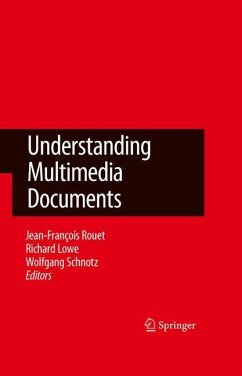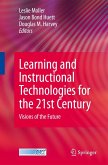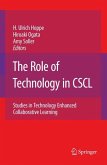Professionals who use multimedia documents as a tool to communicate concepts will find this a hugely illuminating text. It provides a comprehensive and up to date account of relevant research issues, methodologies and results in the area of multimedia comprehension. More specifically, the book draws connections between cognitive research, instructional strategies and design methodologies. It includes theoretical reviews, discussions of research techniques, ad original experimental contributions. The book highlights essential aspects of current theories, and trends for future research on the use of multimedia documents.
Understanding Multimedia Documents deals with issues of great interest to an expanding community of multimedia designers and professional users, such as teachers and information workers. Multimedia documents are increasingly used to communicate knowledge in the mass media and educational contexts. In order to improve their practice, designers, teachers, and other professionals interested in the use of multimedia documents must be aware of how multimedia documents impact students' perception, comprehension and use of information.
Yet knowledge of multimedia quality and its optimal conditions of use is still rather fragmented. While there have been significant advances in the theoretical and empirical analysis of individual processes of document comprehension, the field is still evolving rapidly. New and sophisticated investigation techniques have been designed in the past few years, e.g., eye tracking, automated data collection, that provide analytical data on the complex mental processes involved. The studies presented in this book reflect those advances. They cover a wide range of situations, tasks and domains where multimedia documents may be used and provide in-depth information about the cognitive processes involved in the comprehension and use of such documents.
Understanding Multimedia Documents is of interest to researchers and professionals in a variety of fields, including education and multimedia information systems.
Understanding Multimedia Documents deals with issues of great interest to an expanding community of multimedia designers and professional users, such as teachers and information workers. Multimedia documents are increasingly used to communicate knowledge in the mass media and educational contexts. In order to improve their practice, designers, teachers, and other professionals interested in the use of multimedia documents must be aware of how multimedia documents impact students' perception, comprehension and use of information.
Yet knowledge of multimedia quality and its optimal conditions of use is still rather fragmented. While there have been significant advances in the theoretical and empirical analysis of individual processes of document comprehension, the field is still evolving rapidly. New and sophisticated investigation techniques have been designed in the past few years, e.g., eye tracking, automated data collection, that provide analytical data on the complex mental processes involved. The studies presented in this book reflect those advances. They cover a wide range of situations, tasks and domains where multimedia documents may be used and provide in-depth information about the cognitive processes involved in the comprehension and use of such documents.
Understanding Multimedia Documents is of interest to researchers and professionals in a variety of fields, including education and multimedia information systems.







